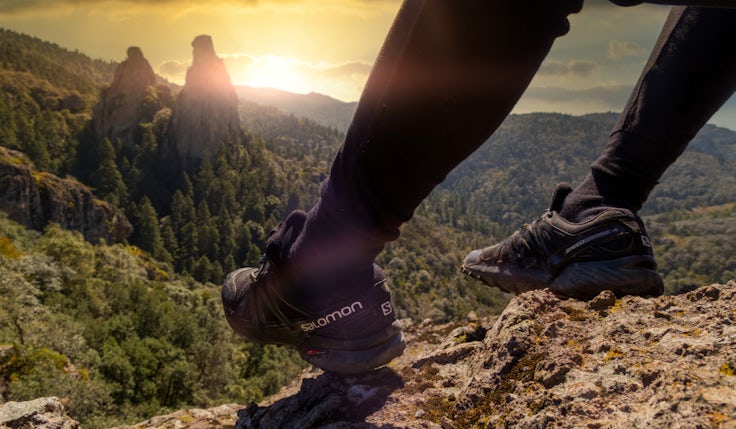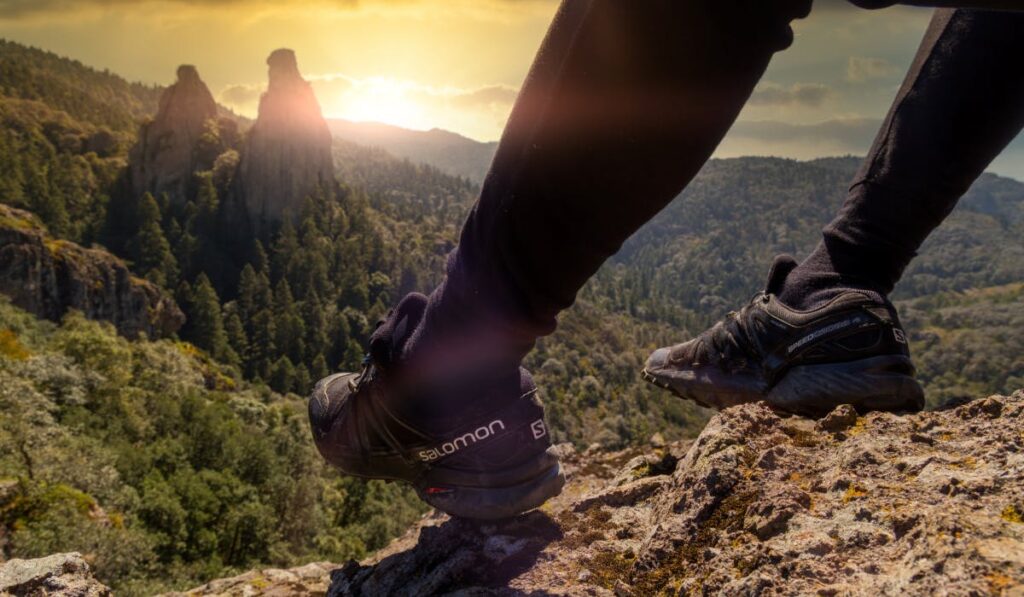 Salomon has instilled a “culture of bravery” in its marketing team that allows it to approach its innovation efforts without fear of failure.
Salomon has instilled a “culture of bravery” in its marketing team that allows it to approach its innovation efforts without fear of failure.
The French running and winter sports company has seen an uptick in its fortunes in recent years as the brand has thrown its weight behind marketing to reestablish itself for a new generation. Its global chief brand officer Scott Mellin has been a key part of that turnaround since joining the business in 2023, and has affirmed Salomon as both a performance sports brand and a lifestyle brand in equal measure. His greatest achievement though? Enabling his team to fail.
“Innovation is a function of mindset,” he tells Marketing Week at Cannes Lions. “There are plenty of tools and processes and systems you can put into place, but if you don’t instil a culture of bravery, you’ll never get innovation despite all the infrastructure you create.”

Salomon has instilled a “culture of bravery” in its marketing team that allows it to approach its innovation efforts without fear of failure.
The French running and winter sports company has seen an uptick in its fortunes in recent years as the brand has thrown its weight behind marketing to reestablish itself for a new generation. Its global chief brand officer Scott Mellin has been a key part of that turnaround since joining the business in 2023, and has affirmed Salomon as both a performance sports brand and a lifestyle brand in equal measure. His greatest achievement though? Enabling his team to fail.
“Innovation is a function of mindset,” he tells Marketing Week at Cannes Lions. “There are plenty of tools and processes and systems you can put into place, but if you don’t instil a culture of bravery, you’ll never get innovation despite all the infrastructure you create.”
It has been his job to “de-risk” failure for the team and enable them to be brave in the decisions they make. “The way I think about my role as chief brand officer is I’m not only shaping marketing and the consumer journey, but I’m shaping the internal culture of the organisation too,” he says.
Salomon has a long and varied history. It started as a family business that made screw-on metal ski edges for wooden skis in 1947 before introducing a slew of innovations that brought skiing to the masses and made the sport “more comfortable” and approachable, Mellin explains.
Is ‘continuous’ brand renovation as powerful as breakthrough innovation?The business at this time also gained a reputation for creating products that would eventually lead to new sports being added to the Winter Olympics. It was acquired by Adidas in 1997, which turned out to be a pivotal moment in the brand’s relationship with footwear, before being sold again in 2005 to Amer Sports, which saw the brand as a safe, steady investment.
However, this background led to the business having a consumer package goods mentality, he says. It was shooting for “2% to 3% top line growth” where the key was to “maximise the distribution” and not worry about “investing in the brands”.
He recalls while working at rival The North Face that people would joke about what was going on at Salomon before replying, “who cares?”, such was the lack of ambition that plagued the business.
This changed in 2019 when Amer Sports was purchased by a consortium of investors led by Chinese firm Anta Sports, and while Covid pushed back its investment plans until 2022, the business has been able to put in place a “brand direct model” alongside strong investments in product teams and the marketing function.
“In 2022, we crossed a billion for the first time, so it took 75 years for Salomon to make a billion dollar top line. It’ll take another four years to add another billion,” says Mellin.
He believes that the Salomon brand turnaround is an example of how to use an innovation mindset as a pathway to growth. And it’s not just about product innovation, he says, something he believes has become the shorthand due to a “hangover” from the tech industry, but it’s about innovating “everywhere” in the business.
Almost half of large businesses leaning on innovation to grow“We were innovating in our go-to-market approach, how we synchronise product and brand to tell more powerful stories to the consumer. We were innovating in how we roll out stores and in the velocity at which we roll out stores. We were innovating in our retail concepts,” he says. “When you deploy capital, you want to do it in a manner where you can see, not only the path of profitability, but to execute in a way where the customer doesn’t get tired of your interior design.”
All of this came from Salomon and its leadership “unlocking the potential” of its people and empowering them to take chances in pursuit of growth. Something that hadn’t happened in the preceding 15 years. “Everybody was playing the CPG mind game of slow growth, de-risk the business. And we said we’d rather de-risk failure for people than de-risk the business,” says Mellin.
Funnels and more funnels
Mellin is a marketer who is in the enviable position of having control of all four of the levers that the 4Ps of marketing offer to him.
He happily admits it is a “fortunate” position to be in and that he manages both the customer journey as well as the full funnel. He sees the journey as a “horizontal experience” and the funnel as a “vertical experience” and so he’s “shaping the story” of the brand across each of these different funnels – think brick and mortar retail, online and wholesale – but the consistency of that message allows the brand to be as efficient as possible.
“Being able to control the entire consumer experience and that journey, no matter where it starts, we always end up in the same place,” he explains. “Which is we create this emotional connection with people – through an influencer, athlete, ad or experience – and we pay that off with product innovation.”
Salomon continues to look for innovations, and is even taking some inspiration from its Olympic past. The brand has leaned heavily in recent years on trail running as its latest product push, its marketing focusing less on performance and more on telling the emotional story of connecting with nature. It is now looking to find a pathway for it to be part of the 2032 Olympic Games in Brisbane.
How marketers are finding growth opportunities in mature categoriesSalomon is the lead supporter for the Golden Trail World Series, the only televised trail running event currently, and has been key in bringing a greater level of professionalism to the sport. “When you put those things together, it creates a new lifestyle, a new culture, and that becomes a tribe,” says Mellin. “And now the tribe of trail runners is big enough that it has the interest of the Brisbane Olympic unit.”
He believes the more approachable Golden Trail World Series – where races last for two and a half hours as opposed to the 40 hour “suffer fests” that defined the sport in the past – will continue to see an expansion in the number of people who want to take up trail running and would “fully legitimise” the sport from its “European image” into something that can spread around the world.
It is interesting to hear Mellin speak this way about the sport as a regular theme during Cannes this year was the idea that brands need to be able to move at the speed of culture. Salmon, however, looks to shape it.
“It sits in our brand promise that Salomon is the brand that shapes the future of sporting culture,” he says. “We’ve done that throughout our history. The idea of shaping the future is a really exciting place to play for a brand leader.”


